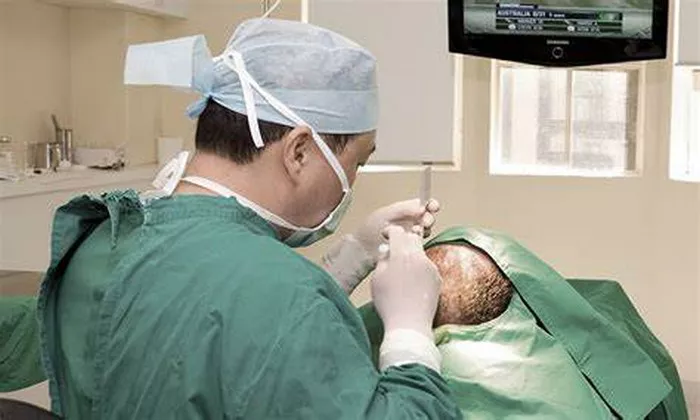Hair loss can be a distressing experience, leading many individuals to consider hair transplant procedures. One of the most common concerns after such surgeries is related to the donor area, the site from which hair follicles are harvested. A common question among patients is: when will the donor area grow back? This article provides a comprehensive overview of the hair transplant process, the recovery of the donor area, and factors influencing hair growth after a transplant.
Understanding the Hair Transplant Process
What Is a Hair Transplant?
A hair transplant is a surgical procedure that involves moving hair follicles from a “donor” site to a balding or thinning area of the scalp. There are two main techniques for hair transplantation:
Follicular Unit Transplantation (FUT): In this method, a strip of scalp is removed from the donor area, and the hair follicles are dissected and transplanted to the recipient area.
Follicular Unit Extraction (FUE): FUE involves harvesting individual hair follicles directly from the scalp using a specialized tool, leaving tiny, circular scars.
The Donor Area
The donor area is typically located at the back and sides of the head, where hair is genetically less prone to balding. This area is selected for its robust hair growth and resilience, making it an ideal source for transplantation.
Healing and Growth Timeline of the Donor Area
After a hair transplant, the healing and regrowth of the donor area can vary based on several factors, including the technique used, individual healing rates, and overall hair health. Below is a general timeline for the recovery of the donor area.
See Also: Can I Shave My Hair After a Hair Transplant? Detailed Guide
Immediate Aftercare (0-1 Week)
Post-Operative Care: After the procedure, it’s crucial to follow your surgeon’s aftercare instructions. Patients may experience some swelling, tenderness, and redness in the donor area.
First Few Days: Expect some scabbing at the donor site as the incisions begin to heal. This scabbing typically lasts for about 5-7 days.
Early Healing Phase (1-4 Weeks)
Healing Process: The donor area will start to heal within a week, and scabs should begin to fall off.
Itching and Redness: Patients may experience mild itching and redness, which should gradually decrease as the area heals.
Initial Growth: New hair growth from the transplanted follicles will not be visible during this time, as the follicles are in the shedding phase.
Hair Growth Phase (1-3 Months)
Dormancy Period: Hair follicles typically enter a dormancy phase where existing hair may shed. This is normal and often concerning for patients.
Initial Regrowth: Around 3 months post-surgery, you may start to notice small hair sprouts in the donor area, signifying the beginning of regrowth.
Continued Growth (3-6 Months)
Visible Results: By this stage, more significant hair growth in the donor area becomes noticeable. The density may not be fully restored yet, but patients can expect improvement.
Full Recovery: The donor area should appear normal, with any redness or swelling having subsided.
Full Growth (6-12 Months)
Final Results: Most patients see optimal results between 6 to 12 months post-surgery. The donor area should look normal, and hair density should be restored.
Variability: Individual results can vary based on factors such as hair type, age, genetics, and the quality of post-operative care.
Factors Influencing Donor Area Recovery
Several factors can influence how quickly and effectively the donor area heals and regrows hair after a transplant:
Surgical Technique
FUE vs. FUT: FUE generally results in less visible scarring and may lead to quicker recovery in the donor area compared to FUT, which leaves a linear scar.
Individual Healing Rate
Genetics: Some individuals naturally heal faster than others due to genetic predisposition.
Age: Younger individuals may experience quicker recovery times.
Post-Operative Care
Adherence to Guidelines: Following your surgeon’s aftercare instructions is crucial. This includes keeping the donor area clean, avoiding excessive sun exposure, and refraining from vigorous physical activity during the early recovery phase.
Health and Lifestyle
Nutrition: A balanced diet rich in vitamins and minerals can support hair growth and overall healing.
Hydration: Staying hydrated promotes healthy skin and can aid in the recovery process.
Stress Levels: High-stress levels can negatively impact healing and hair growth.
Managing Expectations
It’s important for patients to manage their expectations regarding donor area recovery and hair growth. While some may experience rapid regrowth, others may find the process slower. Communication with your healthcare provider can help set realistic expectations and address any concerns.
Consultation with Professionals
Before undergoing a hair transplant, it’s crucial to consult with a qualified specialist who can assess your specific situation and provide guidance tailored to your needs. They can offer insights into what to expect post-procedure based on your hair type and the chosen surgical method.
Emotional Support
Hair loss can be emotionally taxing. Seeking support from friends, family, or support groups can help individuals navigate the psychological aspects of hair restoration.
Conclusion
The question of when will the donor area grow back? can vary widely among individuals but typically follows a general timeline from immediate healing to full regrowth over the course of 6 to 12 months. Understanding the recovery process and the factors influencing it can help patients navigate their journey with confidence.
Choosing a qualified hair transplant specialist, adhering to post-operative care instructions, and managing expectations are all vital steps in ensuring a successful outcome. Remember that patience is key; with time, the donor area will return to its natural state, contributing to the overall success of your hair restoration journey.
You Might Be Interested In
- When to Start Finasteride After a Hair Transplant?
- When Can I Wear a Helmet After a Hair Transplant?
- When Can You Eat Non-Vegetarian Foods After a Hair Transplant?


